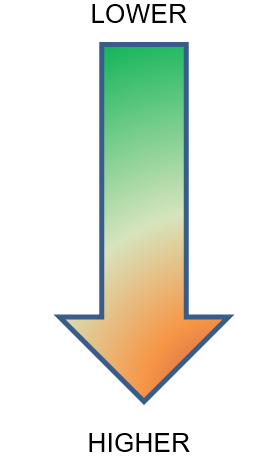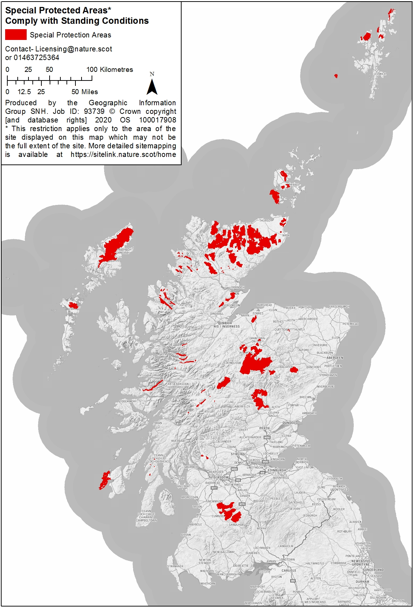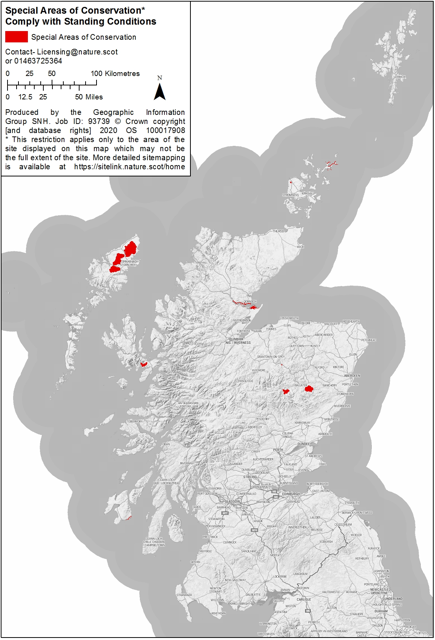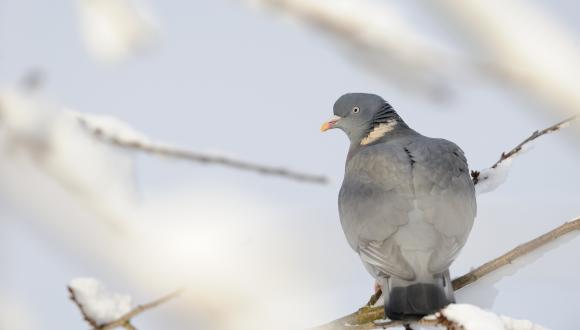General licence for birds - GL03/2024 - To kill or take certain birds for the preservation of public health, public safety and preventing the spread of disease
General Licences allow authorised people to carry out activities that would otherwise be illegal under the Wildlife & Countryside Act 1981 (as amended). They cover situations where we are satisfied that there is no other satisfactory solution in respect of the species to which they relate and the circumstances in which the licensed action may be taken.
Terms and conditions
If you operate under General Licence 03/2024 you must meet the following terms and conditions otherwise your actions may constitute an offence which could lead to prosecution.
What can this General Licence be used for?
This Licence can be used for the following activities for the purpose of preserving public health, public safety and preventing the spread of disease;
- to kill or take certain wild birds listed below
- to attempt to kill those birds, where the attempt results in injury to the bird concerned
- to take, damage or destroy the nests or eggs of those birds
Who is authorised to use this General Licence?
An authorised person may be the owner or occupier of the land on which the action will be carried out, or any person nominated by the owner or occupier of that land.
When and where is this General Licence valid?
Across Scotland from 1 January to 31 December 2024 unless where previously revoked, or on certain designated sites where permission has not been granted. Please see Annexes 2 & 3 for further details.
What restrictions apply to the use of this General Licence?
NatureScot reserves the right to exclude the use of this General Licence by certain persons and/or on certain areas of land where there is evidence to suggest that a wild bird or birds has / have been killed, injured and / or taken, and / or that an attempt has been made to do so other than in accordance with a licence, or where General Licences are being otherwise misused.
This General Licence cannot be used by those convicted of a wildlife crime until that conviction is considered spent in accordance with the Rehabilitation of Offenders Act 1974 (as amended), they have received an admonishment or a court discharged them absolutely.
Any person not able to use this General Licence can still apply to NatureScot for an individual licence.
What other information must authorised persons know before considering use of this General Licence?
Authorised persons must:
- understand this General Licence and comply with its terms and conditions
- only use it for preserving public health, public safety and preventing the spread of disease
What species may be taken or killed under this General Licence?
Feral pigeon Columba livia
Canada goose Branta canadensis
What methods of taking or killing are permitted under this General Licence?
Method
Pricking of eggs
Oiling of eggs
Destruction of eggs and nests
By hand
Targeted falconry
Shooting with any firearm, including semi-automatic firearms, shotguns or air guns
Potential Welfare Impact (refer to method above)

Arrow symbol pointing downwards to show lower impact to higher impact on potential welfare
What general animal welfare requirements are there when using this General Licence?
- Authorised persons should use the permitted method of taking or killing which has the least impact.
- Any bird which this General Licence allows you to kill must be dispatched humanely.
What are the registration and reporting requirements for operators using this General Licence?
There are no registration or reporting requirements under this Licence.
What decoy birds can be used under this Licence?
None
General Notes
- This General Licence does not exempt any operator from complying with relevant firearms and public safety legislation.
- This General Licence does not provide the authorised person with consent on designated sites where consent is not already held.
- Authorised persons should not use the General Licence within 500m of a designated site listed in Annex 2 & 3 where you cannot meet the site’s “Designated Sites- Standing Conditions”.
- Intentionally or recklessly killing, injuring or taking any wild bird of a species not authorised under General Licence is an offence. It is the responsibility of operator to ensure that any methods of control permitted under this Licence do not intentionally or recklessly kill, injure or take any non-target species. Schedule 1, 1A & A1 of the Wildlife & Countryside Act 1981 (as amended) provide additional protection for some species. Authorised persons must ensure they do not commit offences in relation to these provisions.
Annex 1- Definitions
For the purposes of this General Licence;
"humanely" means taking all reasonable precautions to ensure that any killing of birds under this Licence is carried out by a single, swift action.
"wild bird" means any bird of a species which is ordinarily resident in or is a visitor to the UK or any member State or the European territory of any member State in a wild state but does not include poultry. "Bird" includes all stages from chick to adult.
“wildlife crime” means any offence under the Wildlife & Countryside Act 1981, the Conservation (Natural Habitats &c.) Regulations 1994, the Protection of Badgers Act 1992, the Protection of Wild Mammals (Scotland) Act 2002, Deer (Scotland) Act 1996, Agriculture (Scotland) Act 1948, the Animal Health & Welfare (Scotland) Act 2006, the Protection of Animals (Scotland) Act 1912, the Wild Mammals (Protection) Act 1996 and the Hunting with Dogs (Scotland) Act 2023 (all as amended).
“designated site” means either a Special Area of Conservation (SAC) which protects habitats and/or species listed in on Annex I and II of the Habitats Directive, or a Special Protection Areas (SPAs) which protect rare, threatened or vulnerable bird species listed in on Annex I of the Birds Directive.
“Oiling of eggs” means oiling of eggs using paraffin oil (also known as Liquid paraffin BP or light/white mineral oil).
“NatureScot” means Scottish Natural Heritage acting under its operating name NatureScot.
Annex 2- Use on Designated Sites
Authorised persons wishing to operate on the designated sites (listed below) must visit- general licences for birds.
You must understand and comply with any standing conditions for that site contained within the document- “Designated Sites- Standing Conditions” prior to carrying out any of the permitted methods over these sites.
If you cannot comply with these standing conditions then contact [email protected] or 01463 725 364.
SPAs
Abernethy Forest
Anagach Woods
Assynt Lochs
Ballochbuie
Cairngorms
Caithness and Sutherland Peatlands
Craigmore Wood
Darnaway and Lethen Forest
Drumochter Hills
Forest of Clunie
Foula
Glen Tanar
Hermaness, Saxa Vord and Valla Field
Hoy
Inverpolly, Loch Urigill and nearby Lochs
Kinveachy Forest
Knapdale Lochs
Lairg and Strath Brora Lochs
Lewis Peatlands
Loch Lomond
Loch Maree
Loch Shiel
Mointeach Scadabhaigh
Morangie Forest
Muirkirk and North Lowther Uplands
Novar
Orkney Mainland Moors
Otterswick and Graveland
Rannoch Lochs
Rinns of Islay
Ronas Hill - North Roe and Tingon
Tips of Corsemaul and Tom Mor
West Inverness-shire Lochs
Wester Ross Lochs
SACs
Strath
Dornoch Firth and Morrich More
Creag nan Gamhainn
Loch of Isbister
Ballochbuie
Lewis Peatlands
Glen Tanar
Sanday
South-East Islay Skerries
Garron Point
Annex 3- Designated Sites Maps
More detailed site mapping is available at SiteLink.

Special Protected Areas are listed in Annex 2- Use on Designated Sites SPAs.

Special Areas of Conservation are listed in Annex 2- Use on Designated Sites SACs.
Contact
If you already have a licence number, include it in the subject line of your email, or have it to hand when you call.
Disclaimer: Scottish Natural Heritage (SNH) has changed its name to NatureScot as of the 24th August 2020.
At the time of publishing, this document may still refer to Scottish Natural Heritage (SNH) and include the original branding. It may also contain broken links to the old domain.
If you have any issues accessing this document please contact us via our feedback form.




